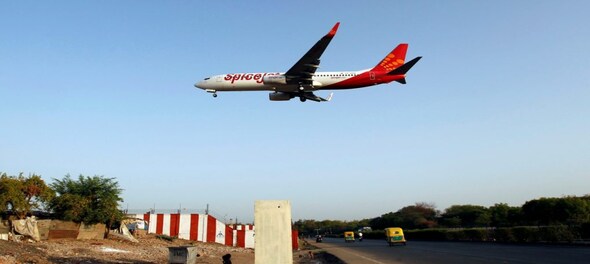
Airlines, due to the nature of the business, leave a carbon footprint. This is not only due to flying aircraft between city pairs but also due to the support and materials each flight requires. The carbon footprint has gradually been declining and as per IATA, the environmental impact of an individual traveller is fifty percent less than it was in 1990. The focus is to reduce this even further.
At an industry level, the International Civil Aviation Organisation has launched the Carbon Offsetting Scheme for International Aviation (Corsia) — an agreement towards having airlines to manage their carbon footprint. Corsia will facilitate carbon-neutral growth from 2020 and by 2050, net emissions by airlines will be half of 2005 levels. Equally interesting are the initiatives being taken up by airlines which may very well affect travellers’ choices in the times to come.
Sustainable aviation fuels
One of the key initiatives that can have wide-ranging impact is the use of sustainable fuels. This borrows from trends in the vehicle industry. This effort was first made popular by Virgin Atlantic more than a decade ago. For its flight between Heathrow and Amsterdam it used a bio-fuel. Yet the effort did not lead to mass acceptance due to several hurdles. Several years later, Cathay Pacific operated the longest biofuel flight while taking delivery of its first Airbus A-350-900 aircraft. In 2018, Qantas operated the world’s first dedicated biofuel flight between the US and Australia saving 18,000 kg in carbon emissions. In India, SpiceJet was the first airline to use a bio-fuel and this was done in 2018.
The use of sustainable aviation fuels is a unique opportunity and can reduce the carbon footprint by up to 80 percent.
On-ground measures
Airlines are also focusing on several on-the-ground initiatives. These are centered on all the processes and materials that are required for a successful flight. For instance, servicing an aircraft requires several different forms of ground transportation. These range from loading baggage to uplifting fuel. On this front, fuel efficient and battery operated ground transportation is a focus area.
Green counters with paperless ticketing is another initiative and a brief look behind the ticket counters while checking in reveals which airlines are focusing on this. The next step is likely to be a focus on recyclable and biodegradable substances and one is yet to see which airline takes the charge on this.
Finally the management of waste is also critical. There are multiple initiatives on this front as well which are not limited to airlines. For instance, most airlines have replaced plastic cups with paper cups. The uplift of good is now closely monitored (with a focus on reducing waste) and ground water recharging and water conservation policies are being implemented.
Initiatives in the air
The green initiatives continue even after aircraft are in the air. The key focus here is on fuel consumption and conversation. From more fuel efficient engines to flying procedures – marginal gains are to be made everywhere. And for airlines, better fuel planning carries a dual advantage because lesser fuel consumption is also a critical profit driver.
Initiatives here range from reduction in contingency fuel to new methods of dispatching aircraft. Other more technical initiatives include the use of variable cost indexes (which looks at the time to fly city pairs as a ratio to the cost of flying), shorter and direct routings and continuous descents for landing. More accurate zero-fuel weights, optimising the centre of gravity and leveraging weather patterns are other initiatives that are being undertaken.
Government policy as an enabler
Green initiatives can be further turbo-charged by supportive policies by governments. Till now there has been no such policy and one hopes that the government does not copy the European-style policies that are centred on punitive environmental taxes rather than encouraging use of bio-fuels.
Policy interventions can range from simple ones like providing a wider selection of airports or opening up of more air-traffic routes to other more complex initiatives that provide offsets and reduction in charges. Not much traction has been seen on either front.
Green equity as a competitive advantage
“Until man duplicates a blade of grass, nature can laugh at his so called scientific knowledge.
– Thomas Edison
As climate change and global warming continue to impact lives, the awareness and focus on green initiatives will only grow. Airlines have recognised this fact and are doing their own bit to ensure they are well positioned. Trends are also pointing to confirm this. Demand is already segmenting and a small but distinct percentage of travellers indeed pays more for certain airlines. Whether this is for the passenger experience or for the ease of travel – the fact is that behaviour patterns are changing. And as airlines implement, market and communicate green initiatives, a scenario where travellers choose or reject airlines based on their green initiatives could very well be the future.
Satyendra Pandey has held a variety of assignments in aviation. He is the former head of strategy at a fast growing airline. Previously he was with the Centre for Aviation (CAPA) where he led the advisory and research teams. Satyendra has been involved in restructuring, scaling and turnarounds. Has also provided policy inputs and suggestions.
Read Satyendra Pandey's columns here.
First Published: Aug 6, 2019 6:00 AM IST
Check out our in-depth Market Coverage, Business News & get real-time Stock Market Updates on CNBC-TV18. Also, Watch our channels CNBC-TV18, CNBC Awaaz and CNBC Bajar Live on-the-go!


VIEW | Can markets predict elections? Applying the 2019 test
May 10, 2024 12:49 PM
Colour-coordinated theme-based polling booths set up in Srinagar
May 10, 2024 9:26 AM
Haryana: 16 women among 223 candidates in fray for 10 Lok Sabha seats
May 10, 2024 9:04 AM

